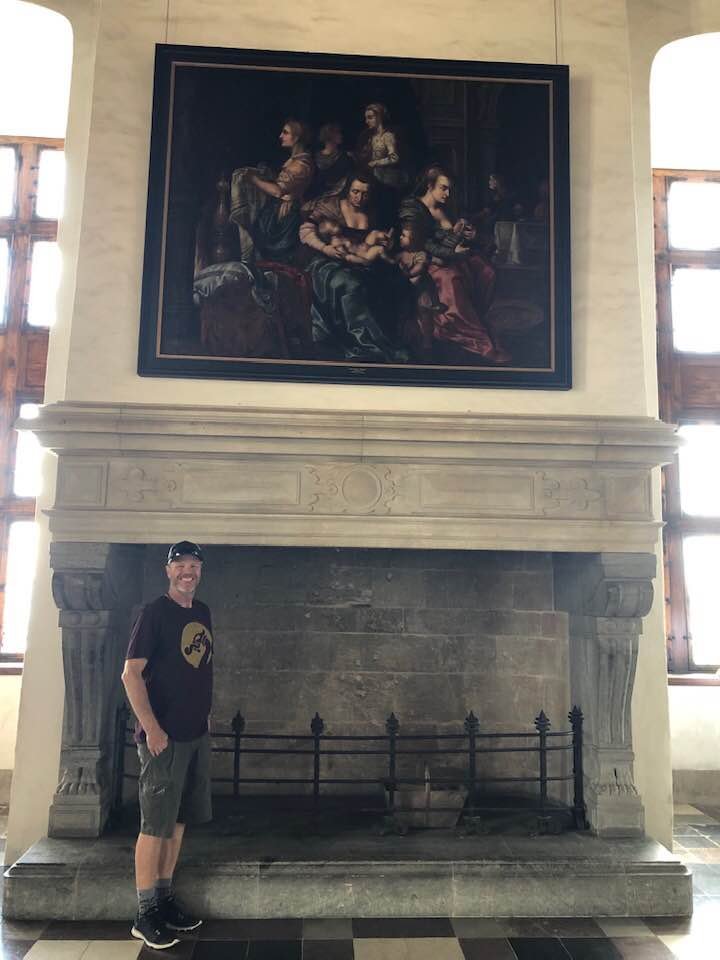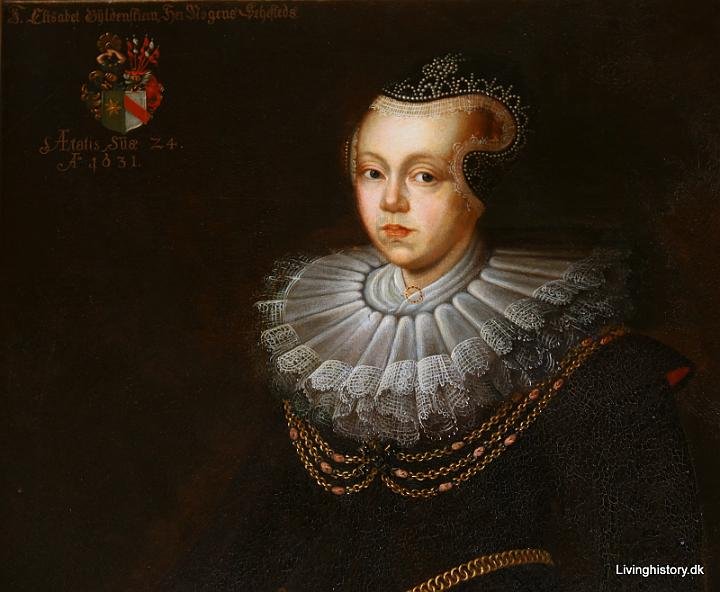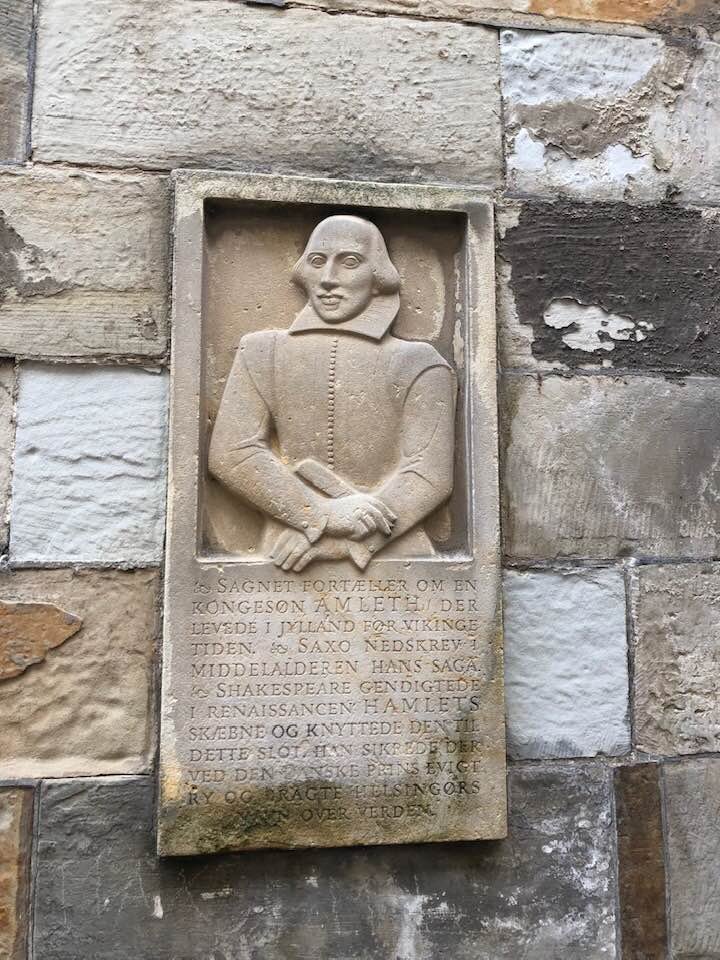My partner, Allan, is Danish and we toured Denmark in 2019. The highlight of the trip was Kronborg Slot, the real-life setting of Shakespeare’s tragedy, Hamlet. Kronborg often hosts performances of the play on the castle grounds; the first production here was in 1816 when amateurs performed it at the garrison. Another production took place in 1916, and it’s been performed regularly at Kronborg since 1937.

Kronborg is located in the city of Helsingør, a Danish name that Shakespeare anglicized to Elsinore. And that wasn’t the only Danish name to change its spelling under Shakespeare’s pen. When we were visiting the manor house at Broholm (on the island of Fyn), I noticed a portrait of a woman named Elisabet Gyldenstjerne and wondered if maybe Shakespeare might have anglicized that name, too?
Two well-known characters in Hamlet, Rosencrantz and Guildenstern, are childhood friends of Hamlet who are spying on him for King Claudius, the evil uncle. After a little research on Wikipedia, I discovered that Shakespeare did anglicize the name: “Rosencrantz (‘rosary’) and Gyldenstjerne/Gyllenstierna (‘golden star’) were names of Danish (and Norwegian, and Swedish) noble families of the 16th century; records of the Danish royal coronation of 1596 show that one tenth of the aristocrats participating bore one or the other name.”

In fact, after Frederick II died (the king who built Kronborg), a courtier named Jørgen Ottesen Rosenkrantz headed up the Regency Council until the next king, Christian IV, came of age. And a later member of the Sehesteds, the family connected to Broholm Castle, was born in 1721 with the name Elisabeth Rosenkrands Gyldenstjerne Sehested.

This plaque hangs on Kronborg’s northern curtain wall: “The legend tells of a prince, AMLETH, who lived in Jutland in the Viking Age. Saxo wrote down his story in the Middle Ages. Shakespeare reenacted Hamlet’s fate in the Renaissance and attached it to this castle. He secured the Danish prince’s eternal reputation and spread Helsingør’s name throughout the world.”

